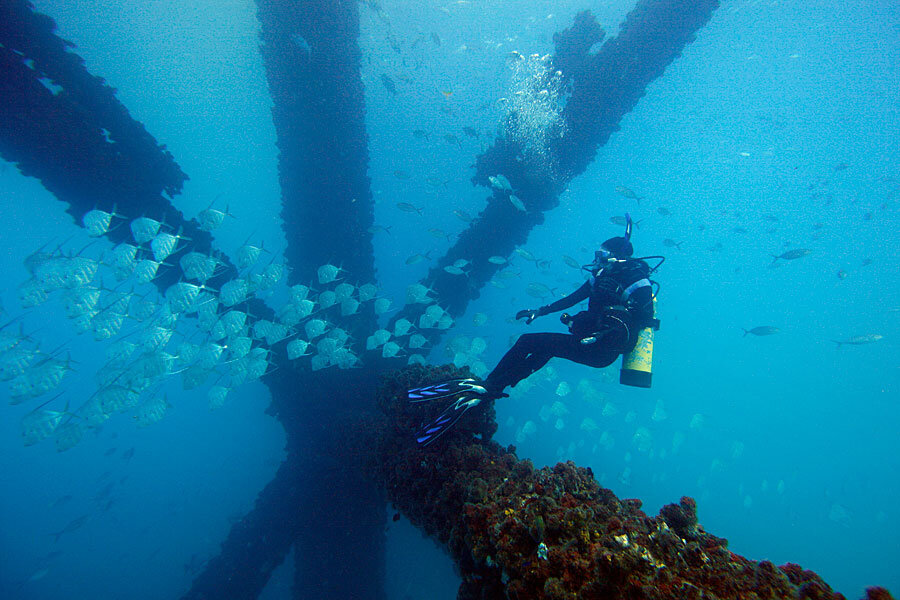How fish can turn invisible in the open sea
Loading...
Forget camouflage prints – the stealthiest fish species manipulate light itself in order to remain unseen by predators.
A new study published Thursday in the journal Science reveals that certain fish have developed microscopic structures in their skin cells, or platelets, that scatter polarized light underwater. By reflecting their adjacent light patterns, these slippery vertebrates can render themselves virtually invisible.
“The open ocean is not a uniform environment by any means, even though it might appear to be in our eyes. For animals, it’s walking through a kaleidoscope,” the report’s primary investigator Molly Cummings tells The Christian Science Monitor. “So, these animals have evolved a means to camouflage with their crazy diverse optical environment.”
For five years, Dr. Cummings; her colleague, Parrish Brady, at the University of Texas in Austin; and other academic collaborators worked on this project to examine how fish are able to adapt to the variations of polarized lights in their surroundings.
The vibrations of polarized light waves all travel on the same plane. Most light, however is unpolarized, and gives off vibrations that move on a multitude of planes.
Sunlight, for instance, is not polarized above the ocean until it hits the surface of the water, creating that glittering glare from the reflection.
Once underwater, however, sunlight is typically polarized. And many fish happen to have the ability to detect and mimic the polarized vibrations because of the platelets in their skin.
Fish platelets, not to be mistaken for the platelets found in mammalian blood, are tiny nanoscale crystals, Dr. Brady says. Scientists have long known that the luminous scales of fish had something to do with their camouflage abilities, but not necessarily how and to what degree.
“[The platelets] are organized in a way to scatter reflective light away from the animal and give it its silvery sheen when you look at the fish,” he explains. “They’re aligned in a specialized way that we believe in the study gives it its reflective properties.”
What does this mean for humans? According to Cummings, studying how our friends in the waters are able to reflect polarized light could lead to innovations in human camouflage.
"Fish have evolved the means to detect polarized light," she said in a statement. "Given that, we suggested they've probably evolved the means to hide in polarized light. If we can identify that process, then we can improve upon our own camouflage technology for that environment."
Especially for military optics, polarization contrast is a helpful way of detecting targets in the open ocean. With the support of the US Navy, the research conducted by Cummings and her team could inspire future technologies that home in on such natural phenomena.
The experiment itself was quite tedious, Cummings says. It involved building an apparatus called the video polarimeter that continuously records the polarized light properties around a fish subject held against a mirror. The fish is held on a rotating platform and after each recorded 360-degree spin, researchers would switch to another angle.
The crew ended up with more than 1,500 different angular configurations, with two weeks worth of recorded data packed into each figure, for five different species of fish. The results showed that two of them – the lookdown and the bigeye scad, both open ocean fish – were dramatically better at camouflaging in polarized light.
Up next, the scientists plan on looking into specifically how these fish use their abilities, perhaps by adjusting their platelets or swimming at different angles.
“It’s been one of those cases of science where all the elements aligned and allowed us to do this dream experiment,” Cummings says.
“I think it’s a great example of how human applications can take advantage of evolutionary solutions and the value of evolutionary biology.”








